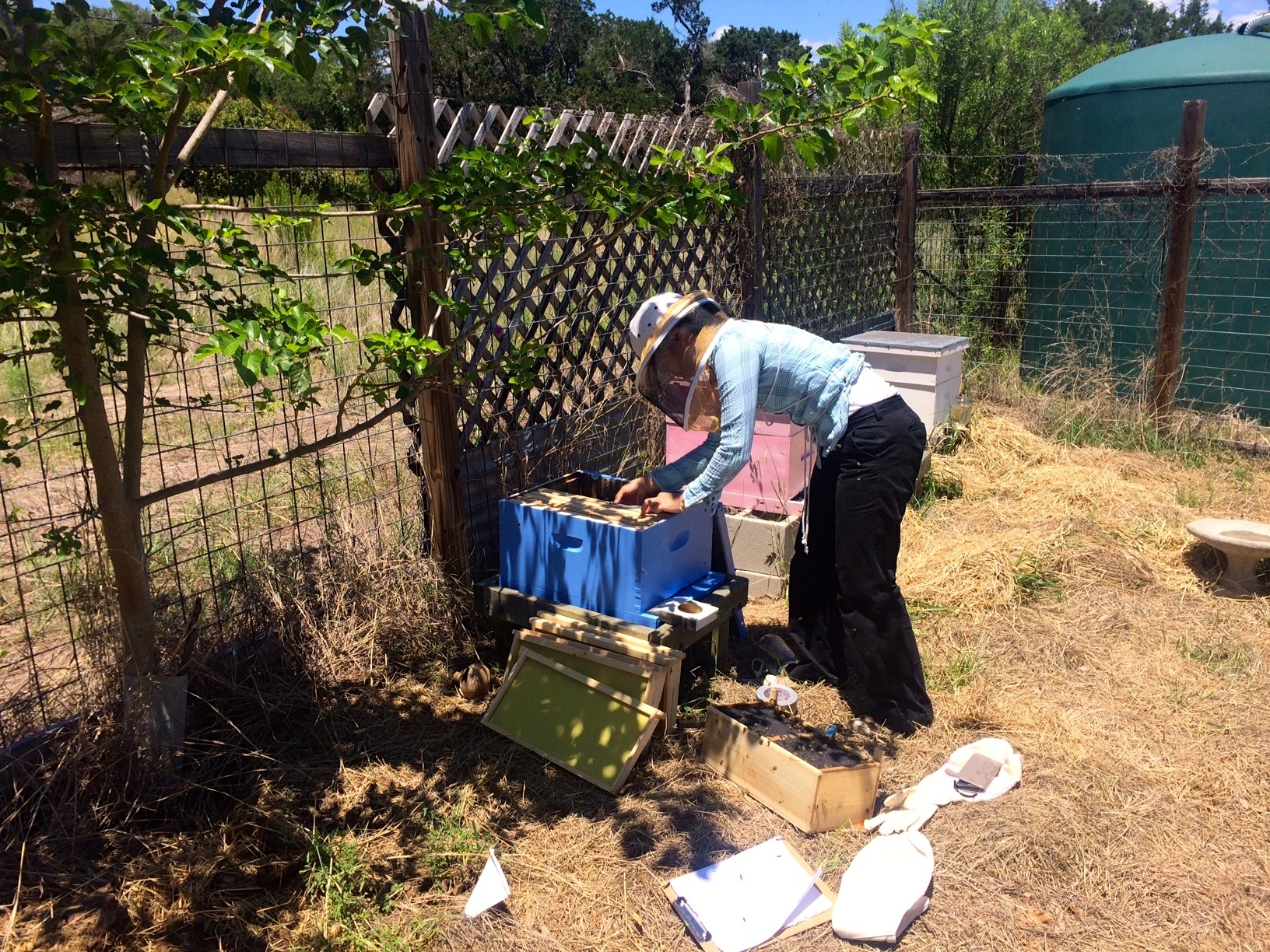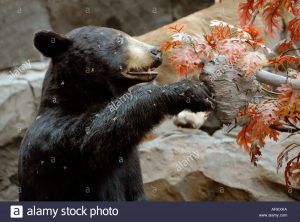
I love the photo above. The beekeeper from Two Hives Honey link came on Friday to install a new hive for me. Her gloves are tossed on the ground with her clipboard; she is dressed casually, not in ‘bee gear’. I painted the new hive blue; a pink and a white hive are in the background. Bees need to be able to distinguish their hive so it is recommended to stencil an identifying symbol onto each hive or to paint the hives different colors. I have a stack of yellow boxes painted and waiting in the garage for installation of a fourth hive this year. I like having bees, but it is a challenge.
I described the beginning of my bee journey last December when I learned that honey bees are European in origin and our native bees, most of whom live in the ground, perform the vast majority of bee pollination. link The next week I went on to describe the human penchant for excess and our exploitation of honey bees and that losing our bees means going hungry. link
But all theorizing on the value of bees to humans has been set aside for the present. I am ‘on the ground’ here. I have a few healing bees stings, lots of frames to clean, painting chores left to do and an inspection by the beekeeper coming up later in the week. My white hive, generously donated to me by a friend, was opened after the blue hive installation. I went out to check on some equipment and the sentries from that hive were on high alert; they chased me, got in my hair and stung me twice. They were still waiting later when the calf got stuck behind a log and that rescue led to a third sting. When I told Beekeeper Sarah I had been stung, she very matter of factly said ‘yes’, the bees in that hive were upset and had stung her several times. I want to be like Sarah, but find there is some wiring in my brain that triggers an emotional response to these bee encounters that far exceeds the short-lived initial pain from the bite or the mild itching the next day. Entomologist, Justin Schmidt has studied the disproportionate reaction of humans to insect bites. He has found insects in general inject far too little venom to do serious harm and that dog bites kill more Americans in a single year than stinging insects.
But pain matters more, says Schmidt than killing power; from the insect point of view, the infliction of pain ‘liberates’ stinging insects from predators and opens ecological niches. Honey bees can visit flowers without harm from birds, for  example. Not all animals respect the sting. Schmidt points out that bears put up with bees stings for honey. “Capuchin monkeys will gobble down a wasp’s nest full of juicy larvae as if it were a ham sandwich, the stings seemingly no worse than a little hot mustard on the side. Harvester ant stings have evolved a whammy wicked enough to scare off birds, amphibians, and almost everyone else. But the horned lizard has called the ant’s bluff by becoming resistant: It licks the ants up with impunity.” link Nature is tough.
example. Not all animals respect the sting. Schmidt points out that bears put up with bees stings for honey. “Capuchin monkeys will gobble down a wasp’s nest full of juicy larvae as if it were a ham sandwich, the stings seemingly no worse than a little hot mustard on the side. Harvester ant stings have evolved a whammy wicked enough to scare off birds, amphibians, and almost everyone else. But the horned lizard has called the ant’s bluff by becoming resistant: It licks the ants up with impunity.” link Nature is tough.
Beekeepers often get used to the toxins of stings, the effects of any sting reduced to a slight inconvenience. However, repeated bee stings can also cause a serious allergic reaction; and, of course, a single bee sting can cause a debilitating injury, even death— which demands absolute respect for this little insect. To be able to draw upon a serene and peaceful mind when working with bees is dazzling to me. The bees respond in kind, revealing serenity and peace to humans they approve of.
Keeping bees has been going on for thousands of years with beekeepers seeking zen for the benefits. As important as bees are to pollinate our crops, the honey they produce has been used to treat wounds and intestinal problems. Honey is an antimicrobial and can help infection; it can help boost immune systems and sooth skin disease. link
And, it tastes SO GOOD!
